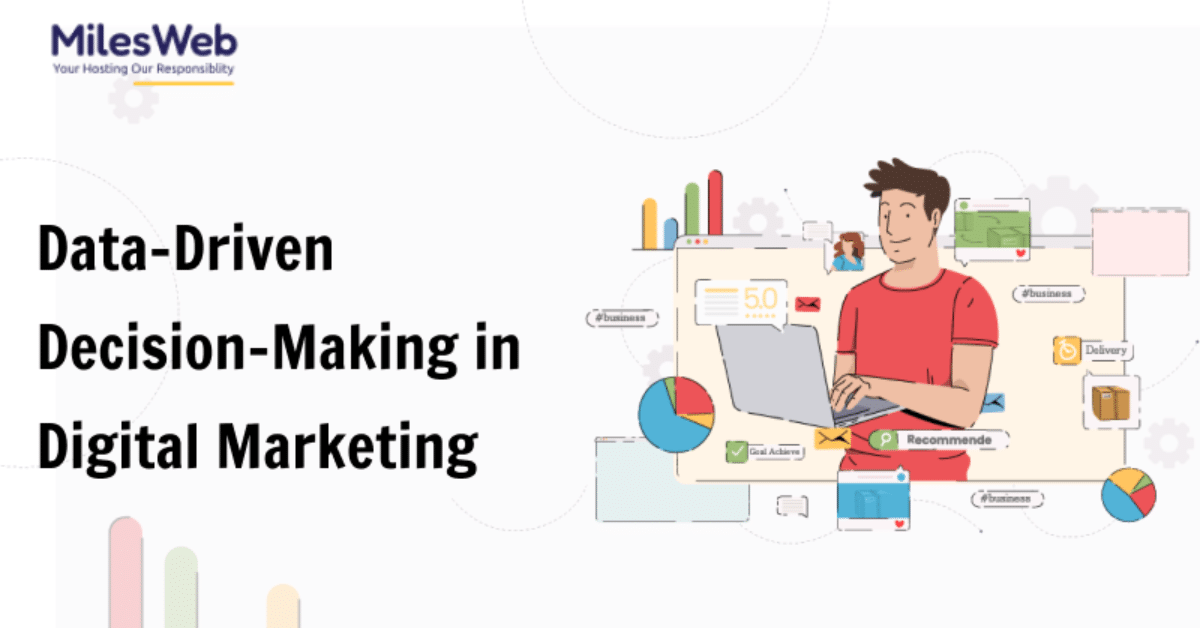Data-Driven Decision-Making in Digital Marketing
Data is the new oxygen of the 21st century! Every business and organization is data-driven. From website analytics to social media management metrics, data analysis, and tracking possibilities are seamless. But how can companies draw this information to conclude? This is where data-driven digital marketing measures step in.
Businesses need high-speed and reliable hosting solutions to effectively manage and process large volumes of data. An NVMe SSD VPS (Virtual Private Server) ensures faster data retrieval, improved website performance, and seamless analytics processing.
Data-driven decision-making involves using data and analytics to guide marketing strategies and tactics. Activities like data interpretation, analysis, and collection inform decisions for a better outcome.
By harnessing data power, businesses can optimize their digital marketing efforts. Additionally, businesses often need a website migration service during digital transformation to seamlessly transfer their website data, maintain SEO rankings, and ensure minimal downtime. Here are the key strategies for data-driven decision-making in digital marketing.
Key Strategies for Data-Driven Decision Making
Define Clear Objectives
Before analyzing the data, it is crucial to define the marketing objective. What do you aim to achieve? Whether it is increasing brand awareness, generating leads, or enhancing customer engagement, have clear goals that help guide your data collection and analysis efforts.
Suppose a company wants to boost website traffic and determine the most effective channels and approaches to enhancing traffic. Afterward, it can collect data to understand sources of referral, search keywords, and user behavior, and analyze it to make data-driven decisions that support its objective.
Identify Key Performance Indicators (KPIs)
After evaluating the objectives, identify the key performance indicators (KPIs) that align with the brand goals. These KPIs include conversion rates, website traffic, and social media engagement. These KPIs can be tracked and analyzed to determine how effective marketing is, and based on the data gained, you can make decisions using data.
For example, if a business wants to increase social media engagement, its selected KPIs could be likes, shares, comments, and click-through rates. Monitoring these metrics and analyzing the data will help it determine the type of content that resonates with its audience and revamp its social media strategy accordingly.
Tools and Technology
Investing in the right tools and technology makes a successful data-driven decision-making strategy possible. Different analytics platforms and software are available to collect, organize, and analyze the data.
Google Analytics, HubSpot, and Moz are specialized tools that help you gain valuable insights into marketing campaigns. Google Analytics, for example, contains a wealth of information about a website's traffic, user behavior, and marketing campaigns. To understand the efficiency of marketing efforts in business, set up different goals and track events and objectives.
A/B Testing
The A/B test is a widely used technique that helps position the most effective or performing version of a marketing campaign or page for a business. By segmenting your audience randomly, you can observe which variations are more effective and determine the best elements, making data-driven decisions to maximize your marketing campaigns.
For instance, while running a Facebook ad campaign, you can test different headlines, images, or calls to action to determine the best-performing combination for click-through or conversion rates. This data-driven approach helps you refine your marketing strategies and better utilize your resources.
Personalization
Personalization is another data-driven decision-making strategy. In this, digital marketers analyze customer data and behavior to create a personalized marketing experience for the target audience. It can be as simple as addressing customers by their initials in newsletters. Otherwise, marketers can dynamically change the website's structure.
For instance, Netflix uses this personalization strategy where movies and TV shows are based on the user’s viewing history and preferences. This approach enhances the user experience and drives customer loyalty and engagement.
Predictive Analytics
Predictive analytics uses historical data to make future outcomes and predictions. Businesses can make informed decisions about future marketing initiatives by analyzing the current patterns and trends in customer behavior. This data-driven marketing strategy helps identify which customer segments are likely to convert. Also, you can evaluate which products are likely to perform well, along with the effective marketing channels.
For instance, Amazon uses predictive analytics to recommend products to customers based on past purchase history. Their revenue and customer satisfaction have increased significantly due to this data-driven approach.
Final Thought on Data-Driven Decision-Making in Digital Marketing
Data-driven decision-making has become the cornerstone of marketing success. Using this, enterprises can move beyond guesswork and craft strategies that resonate with their audience.
From personalized content to optimized ad spend, data empowers marketers to make informed choices, maximizing engagement and ROI. By interpreting consumer behavior and trends, brands can stay ahead of their competitors and adapt quickly to changing market conditions.

